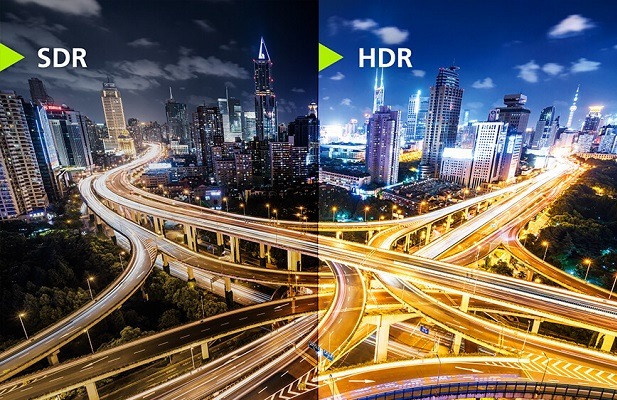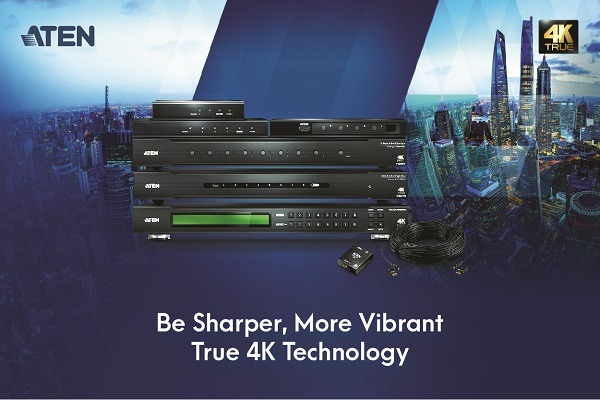4K, the final frontier for video (for the meantime), is makings its way across a range of residential and commercial industries and, most importantly, into our living rooms.
People are seeing the beautiful crisp imagery that 4K video brings to our movies, sports and gaming. But are they seeing 4K or True 4K? Say a systems integrator has just hooked up a beautiful TV, run the wires and cables around the house and is ready to sit down, watch The Fifth Element with a prime Bruce Willis and then follow it up with a session of the gorgeous and gory DOOM Eternal. But when playing, they notice a slight flickering of the screen.
ADVERTISEMENT
This could suggest the user isn’t seeing True 4K, just 4K video.
What’s the difference between the two? As ATEN product manager Santino Santoro puts it: “The difference is mainly in the chroma subsampling, HDR10+ colour contrasting, data transfer rate and screen refresh rate.
“If I was to show someone, I’d say, just look at the screen and if you can see image drag, maybe it’s not smooth or clear, it’s probably a slower refresh rate which means it’s not a True 4K image. When you watch something in True 4K, it’ll be incredibly smooth and crisp.”
Santino explains that the refresh rate needs to reach 60Hz as opposed to 30Hz.The resolutions can be either 4096×2160@60Hz, although this is for cinema production where the aspect ratio of the screen allows for more pixels or 3840×2160@60Hz. At home we watch TV with an aspect ratio of 16:9. It’s not as wide as what is used in Cinema, so we end up with a resolution of 3840 x 2160.
“With a lower refresh rate 30Hz 4K panel for example, you can see more drag between images if you’re looking for it,” Santino says.
“The human does something called Saccadic suppression where the mind takes a mental photo and selectively blocks visual processing during movements. This would mean that if you’re not paying attention, you may not notice. So if you’re gaming or watching a movie as intense and exciting as The Fifth Element, actively looking at the screen, you would more than likely notice it.”
Additionally, to reach the True 4K output, the chroma subsampling should be 4:4:4, as opposed to 4:2:0 which would be used in a 4K system.
“4:4:4 sampling is used in high-end filming because it is uncompressed color and is transferred through without any reduction in bandwidth,” Santino explains.
“For example, if I’m using a non-True 4K TV to play a game like Rocket League, it’ll look stunning, but I would be able to see that there’s a bit of lag between the console and the screen, something that could be make or break for online gaming.”
On a True 4K screen, the motion and smoothness are far better, images sharper, refresh between movements are smooth with almost an unnoticeable amount of flickering. Santino says: “It’s almost soothing to watch a True 4K movie in my opinion.”
But what can an integrator do when working in the True 4K space?
The first thing would be to trust the cables they’re using and understand that while some products will be advertised as 4K, it may not reach the potential of True 4K and there is essentially another tier to the resolution.
“Recently, I had an installer wire up a customer’s displays in their office to a 4K video matrix using a ‘4K HDMI cable’,” Santino says.
“The cable didn’t output 18Gbps data though and it wasn’t True 4K. Although the cable was the right length for the job, it was not capable of outputting 4K at a distance of 30m with a data transfer of 18Gbps. It supported only 1080p@30m.
“The other issue was the cable didn’t even support full 4K, even at a shorter distance. His customer asked specifically for “True 4K” so it was very noticeable for them once they switched their panels on and saw a lower resolution and a lack of vibrant colours.”
ATEN provided the customer with one of its True 4K active optical cables and the customer achieved the desired resolution.
On top of the cables, ATEN offers a range of True 4K and 4K products including boosters, splitters, video matrixes, video extension and high-speed, long distance active optical cables.
The ATEN True 4K HDMI splitter can deliver 4K@60Hz up to 15m, making it an ideal fit for corporate, educational and commercial settings as well as residential.
“The range is quite good, it’s there to host the full 4K experience if that’s what someone’s after,” Santino says.
All these ATEN products are also backwards compatible with 1080p systems, giving users flexibility with their products as well as a future-proof solution if they decide to upgrade on an existing one.
“It’s truly about convenience. If you currently have a 1080p TV at home, go out shopping and buy a 4K matrix so you can use multiple 4K devices, then later on decide to upgrade your TV, you won’t have to buy another matrix to suit the specification of the TV or the devices,” Santino outlines.
“It’s also if you own other legacy items, it just gives you more opportunity for compatibility.”
ATEN takes pride in research and development, manufacturing and, above all, producing high-quality low budget AV products to suit all customer needs. ATEN also aims to help customers achieve the best quality result within their setup, budget and requirements.
Want to know more? Feel free to give ATEN’s friendly support team a call on 02 9114 9933 or email them at [email protected]
-
ADVERTISEMENT
-
ADVERTISEMENT
-
ADVERTISEMENT
-
ADVERTISEMENT


